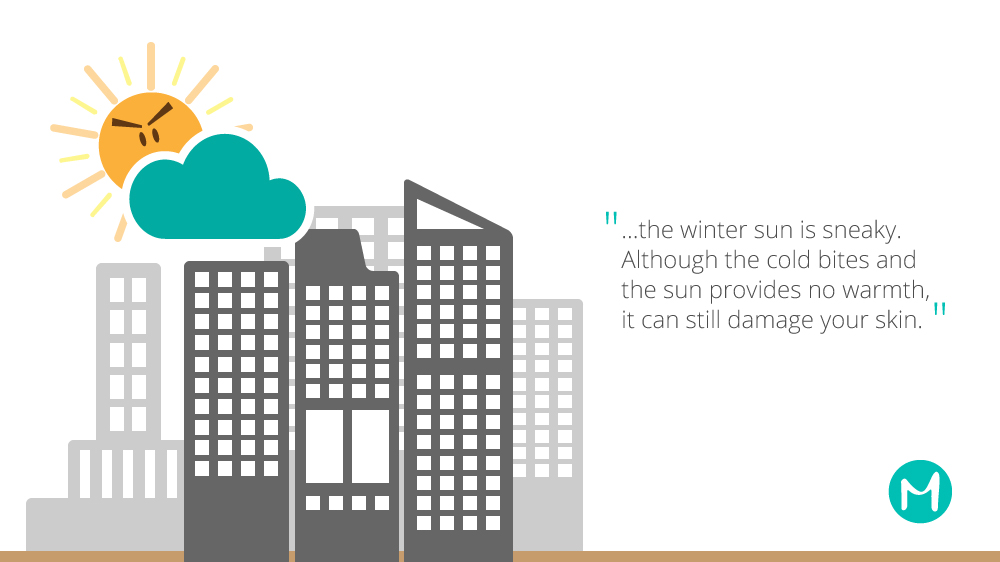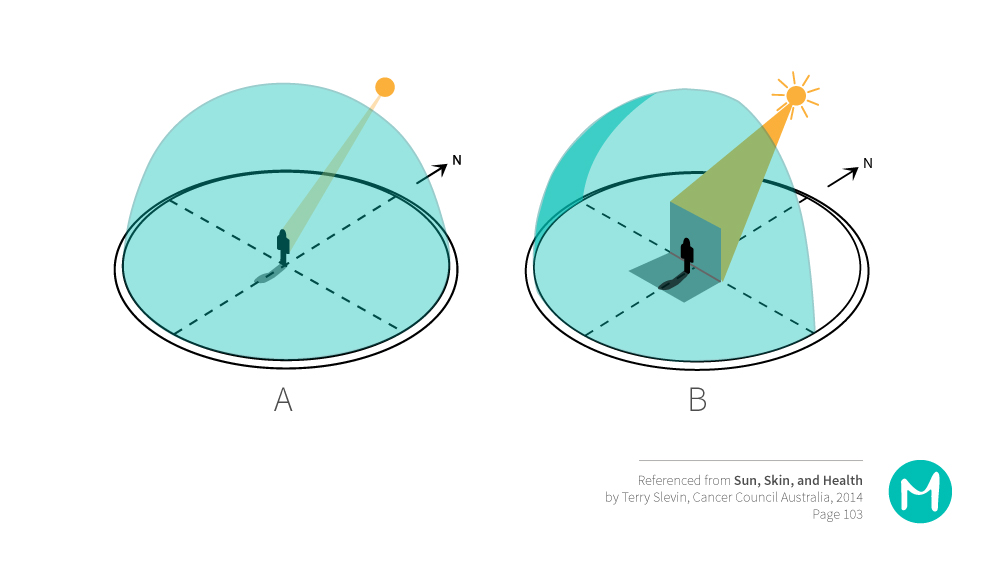Hats, Scarves, and Sunscreen
Chehreh Hessami, BA&Sc | Nov 19, 2014 | UV Sun Cloud
The sunny days of summer are long gone, and those of us living in the Pacific Northwest may have already forgotten what the sun looks like. With the dark days and gloomy skies, it’s hard to imagine that any damaging UV rays could sneak past the clouds and actually reach our skin. But they can, and they do.
The majority of the population associates sunscreen with summer time. While it is extremely important to protect your skin during the summer months, it is equally as important to think about sun safety in the winter. Sun protection is essential year-round.

First of all, the winter sun is sneaky. Although the cold bites and the sun provides no warmth, it can still damage your skin. Heat is not a good indicator of potential UV exposure. It’s true that the sunburn-causing UVB rays are weaker in the winter, but UVA rays are equally as strong in the winter as they are in the middle of summer - and they do a lot of damage! Compared to UVB rays, UVA rays penetrate deeper into the layers of the skin and can cause cellular damage, leading to wrinkles, age spots and cancer. Sunshine on a freezing winter day can still be harmful to your skin. Another sneaky aspect of UVA rays is that they are able to bypass glass, meaning you can still be exposed when sitting indoors by a window. For example, it has been shown that skin cancer is more common on the left side of the face in countries where the driver sits on the left, a consequence of UVA rays penetrating through car windows. Broad spectrum sunscreen - one that protects both UVA and UVB rays - is important throughout all seasons.
Second, UV rays don’t always point down from the skies. In fact, most of the UV exposure we get doesn’t come directly from the sun, but rather reaches us indirectly, as diffuse UV, by being reflected off the earth’s hemisphere. Though most people don’t even know about this form of sun exposure, diffuse UV contributes to 80% of our yearly exposure dose.

So even when you think you are safe in the shade, you are still being exposed to UV rays - another reason to apply sunscreen regularly. Sun protection is especially important for those who enjoy winter sports, because all that fluffy white snow has a large caveat: reflectivity. A fresh sheet of snow can have a reflectivity as high as 80-90%. What’s worse is that by reflecting upward, UV rays bypass all of our defense mechanisms that would normally protect against the sun shining down on us, like eyelids and eyebrows, and can even cause damage to the eyes. Sunglasses or goggles are an important part of sun protection year-round.
Third, while clouds do provide some protection against UV rays, they won’t do all the work for you. Depending on the cloud coverage and thickness of the clouds, a significant amount of UV rays can push through to reach the earth’s surface and your skin. The unfortunate truth is that clouds are better at blocking visible light than they are at blocking UV light, meaning UV rays can damage your skin even on a cloudy day. Much like heat, visible light is not a good indicator of potential UV exposure. Be extra careful on hazy days with light clouds because thin, airy clouds offer no protection against UV rays.
The best defence against UV rays is to incorporate sunscreen into your daily routine. Get to know the sunscreen aisle, and choose a broad-spectrum sunscreen with (at least) SPF 30. For those who moisturize their skin regularly in the mornings, look for moisturizers that offer broad-spectrum UV protection, and don’t forget to reapply throughout the day. Whether it’s July or December, dermatologists recommend that you get in the habit of applying sunscreen 7 days a week, 365 days a year.
Regardless of how unthreatening the weather may seem, it’s important to stay safe from the sun’s harmful rays in every season. So, next time you’re getting bundled up to step outside on a chilly day, keep these tips in mind, and think about adding a layer of sunscreen to all your other winter layers.
References:
Slevin, Terry, ed. Sun, Skin and Health. Collingwood: CSIRO Publishing. 2014. Google Books. Web. 10 November 2014. (Cancer Council of Western Australia)
Environment Canada - How much UV reaches me?
Reviewed by Vlad Ratushny, MD, PhD